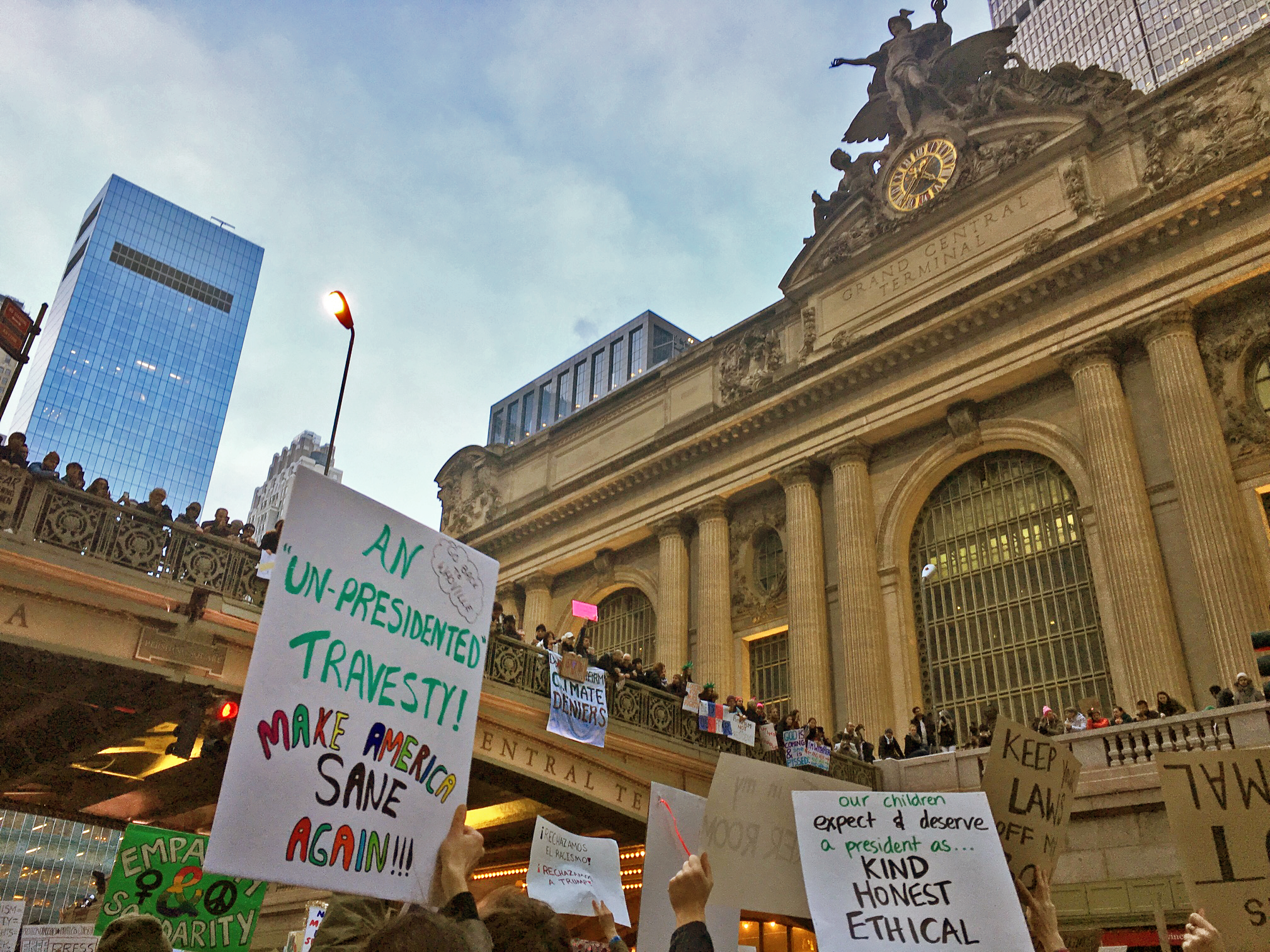
Image from the Women's March in New York City, January 21, 2017.
Women’s History Month 2017 is coming to a close, and perhaps this year more ever, is ending with an ellipsis rather than a definitive period.
It seems that there have been as many pieces debating the effectiveness of the Women’s March and its finer details on the web as there were marchers in cities around the world. But to focus on the internal divisions of the Women’s March or the minutiae of its logo is a red herring when you consider the fact that the Women’s March on Washington (and its sister marches) made it the largest day of protests in U.S. history, according to data scientists Jeremy Pressman, University of Connecticut, and Erica Chenoweth, University of Denver, who compiled participant numbers into an incredible data set of crowd estimates from the event.
This is not to dismiss the importance of these differences. In fact, the women’s movement in the U.S. has historically been diverse—and its policies divisive—among its members. When as a movement, you claim to represent 50% of the population, whose life experiences touch other disciplines, demographics, and identities, it inevitably presents rocky ground to navigate.
There is historical precedent for this. Soon after the Seneca Falls convention in 1848, the women’s suffrage movement split over the passage of the 15th amendment. Amid tactical disagreements in achieving voting rights, the movement split again in 1917, with the more radical National Women’s Party emerging from the National American Woman Suffrage Association. There were similar debates about with whom second-wave feminists should partner and from whom they should distinguish themselves as they tried to find their place amid other civil rights groups in the 1960s. Today, women are important players among other movements too, from Black Lives Matter to the Fight for $15. Time progresses, and history repeats itself.
So how does one brand feminism’s seemingly re-energized third wave—the ocean of women (and men) that encompass it, and all of its tributaries? In attempting to create a logo that encompasses the Women’s March and all that participated in it, one has to rely on essentialist feminism—a unifying theory that relies on the supposed characteristics all women share. That presents a bit of a branding problem for any designer, one unlikely to be solved by all but the most ambiguous symbol.
Designers have a trained eye for noticing and analyzing the details. But should we feel that we are now being confronted with a retrograde vision of womanhood, there are better ways to galvanize our skills than to denigrate the work of the past. Stand up, take action.
That so many people have been mobilized under the banner of the Women’s March means more than any critique of aesthetics and iconography. To argue otherwise assumes a universal level of keen visual literacy, and displays a sense of self-importance where our own discipline is concerned. This isn’t making a case for “bad” design—but a recognition that sometimes design comes second. With the Women’s March on Washington, this is felt in a literal sense: the design team was brought on a month before the event, requiring them to work retroactively for a movement that already had momentum of its own.
At a recent AIGA New York event called “Citizen Designer Now,” a town hall discussing how designers can become civically engaged changemakers, an audience member said, “Design is a way of problem-solving. We need to expand our thought process about what our role is.” This is true, but sometimes we need to remember that our role has limitations too. That’s the good thing about an ellipsis. What happens next is open-ended.


